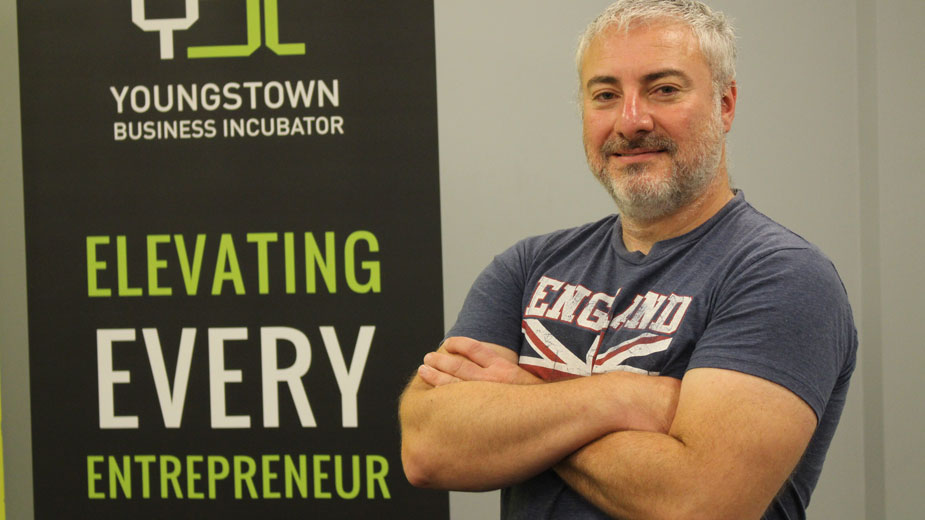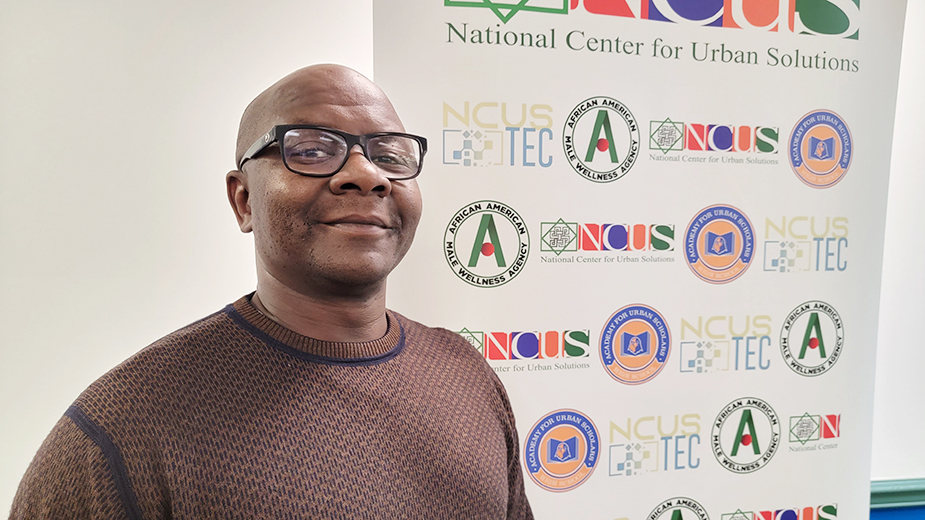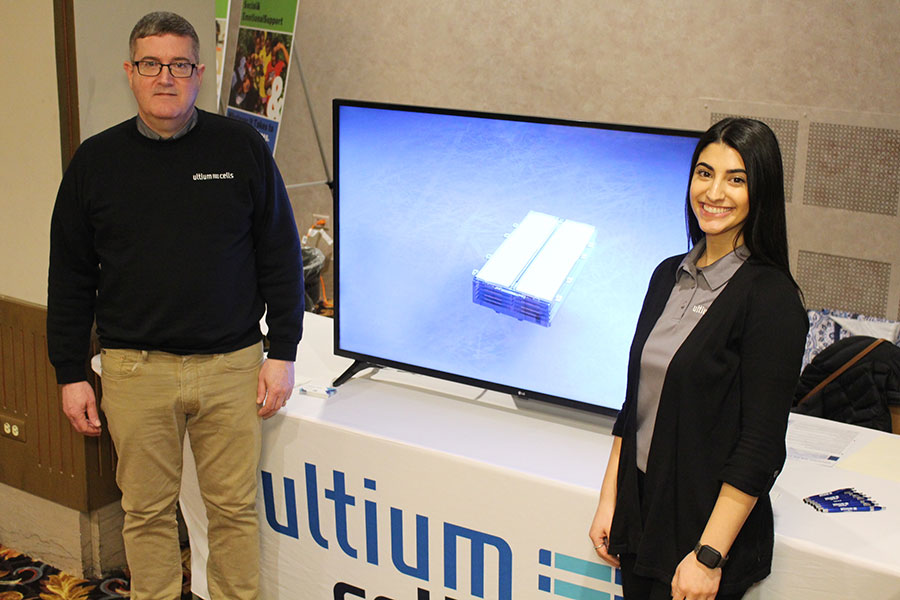Entrepreneurs Learn from Groys’ Experience
By Dan O’Brien
YOUNGSTOWN, Ohio — So, what exactly does an entrepreneur in residence do?
“I help clients with business strategies, how to grow their customers, how to put together a pitch, and how to raise money,” responds Gene Groys, an entrepreneur in residence at the Youngstown Business Incubator and JumpStart Inc. in Cleveland.
“Or, I show them how to shut down – really quickly,” Groys adds. “The worst thing for an entrepreneur to do is waste time. If you’re going to fail, fail fast.”
Groys is no stranger to the startup business world and is today working on launching his third company. Simultaneously, he counsels other early stage entrepreneurs about what to do – and equally important – what not to do, when it comes to getting their companies off the ground so they can thrive.
“I do everything from soup to nuts in helping an early-stage company get themselves from point A to point B,” he says.
It’s not as simplistic nor as easy as it sounds, Groys cautions, as he brings more than 10 years of entrepreneurial experience to the table. Indeed, it’s this experience that provides him with the kind of credibility that imparts valuable lessons from the wildly successful ventures he’s undertaken and the duds – both of which are important to the education of an entrepreneur.
“I’d love for entrepreneurs to learn from some of the mistakes I made,” he says, and then, most importantly, how to adjust and make their plan work.
Groys has a software background and was vice president for product management for a company in Boston before being recruited to head content management for American Greetings’ interactive division in Cleveland. After a year at that job, Groys was forced to close down his sector, leaving him at a crossroads.
“I had a job opportunity in San Diego, but I didn’t want to move,” he says. “I launched my first company purely out of necessity.”
It’s not unusual for entrepreneurs to enter their first business venture by accident, Groys says. In his case, his idea was to develop software and launch a social network for businesses. That was until a friend of his in the nursing home industry inquired as to whether the software platform would help solve a problem his company and others like it wrestled with constantly.
“As an entrepreneur, you have to explore possibilities and keep an open mind,” Groys says.
What resulted was the establishment of OnShift in 2006, a company that develops workforce management software geared specifically for nursing homes. “I took a week and researched it and found that it was a huge problem,” he says, since the industry is highly regulated and skilled-nursing facilities could face heavy fines if they are not adequately staffed. “After a week of research, I completely pivoted the company and transformed it into scheduling and labor management software,” he says. “Then, I received my first investment.”
Groys spent the next seven years helping to build that company, and as of today, OnShift has raised more than $33 million in capital.
Among the most valuable takeaways from launching and organizing the business, Groys notes, is that he realized that he didn’t need to be the president or CEO of the venture to make it work. “You need to put the right team together to grow the company.”
In OnShift’s case, Groys appointed one of the firm’s original investors to run the business, while he worked on the software development side. “He had more experience in the industry, and could raise money better than I could,” he says.
Still, seven years into the venture, Groys was looking for other opportunities. The next company he launched, he concedes, didn’t work out as expected and was shut down. Meanwhile, the YBI and JumpStart recruited him as the entrepreneur in residence to help get early-stage companies off the ground.
“I was also looking for opportunities where I could become involved – in either joining another company or starting my own,” he says. That has led to the launch of his third and current venture – MedaSync – an analytical software for the skilled-nursing industry that manages clinical, financial and contract data in order to predict costs.
“We already have multiple customers and we’ve experienced aggressive growth,” Groys says. “We did a lot of validation, did our research in the market, identified the problem and solved the problem.”
MedaSync recently raised a portion of its first round of funding – $600,000 spearheaded by Valley Growth Ventures, a regional venture capital fund. “The market and investors are clearly excited about what we’re doing.”
The new venture was formed through a partnership with a former OnShift sales executive, Ryan Edgerly, now CEO of the MedaSync. “I come from an advertising and PR background, and I made a decision to broaden my horizons and run my own business,” he says.
Edgerly says the subscription software analyzes costs at a granular level to provide skilled nursing facilities with the most reliable data so they can better understand their costs. “The question is how do we help nursing homes make sure they are paid for services they provide?”
Developing the business was no easy task, Edgerly says, and the partners took special care to finesse their idea by extensively researching the marketplace, identifying problems that impact the industry, and talking to potential customers to receive feedback on their concepts. All this evolved over the last three years.
The company has received help from YBI as it ramps up. “We’re excited about the growth prospects,” Edgerly says. “We think we can grow this into a $25 million company.”
The key to developing MedaSync was to secure commitments from customers first and then demonstrate the value of the product, Groys says. Once the product or service gains validation, the more likely that serious investors will take notice.
Among the biggest mistakes entrepreneurs make is that they fail to fully understand the scope of their product and market, Groys says. “The biggest mistake is thinking, ‘If I build it, they will come.’ Hands down, it’s when entrepreneurs don’t validate the market.”
And no one will discover this faster than a potential investor, Groys says. “Investors will know whether you’re story is real and whether you’ve done your homework.”
The second-most critical aspect of securing investors aside from the product itself is the pitch, Groys relates. Investors no longer want to scour over lengthy business plans anymore. Instead, savvy venture capitalists can determine whether your idea is worth their time and investment within the first five minutes of a 20-minute pitch.
“You tell the story through your pitch, and your pitch essentially becomes your business plan,” he says.
Groys says he can’t stress to young companies enough the importance of crafting the best possible delivery – replete with a slideshow that an audience can read, and all of the hallmarks of your business. Among the major points an entrepreneur must emphasize is first identifying the problem, how the product or service solves the problem, the value and return on investment of the product, the business and marketing strategy behind the idea, revenue projections over the next three years, and details on how the team will execute sales.
And, early stage companies must understand that the lending environment in the Midwest is far different than that of the East or West coasts. “There are fewer dollars here for pre-seed companies,” he says.
Most investment groups in northeastern Ohio, for example, want to see companies that have built their product already and have proven their worth in the market before they plunk down any cash, Groys says.
That’s why the early funding prospects for MedaSync are so promising in this market, Groys notes. “We acquired customers before we built anything,” he says. “We knew it was going to be a home run, and we’re moving this company along as fast as we can.”
Copyright 2024 The Business Journal, Youngstown, Ohio.



